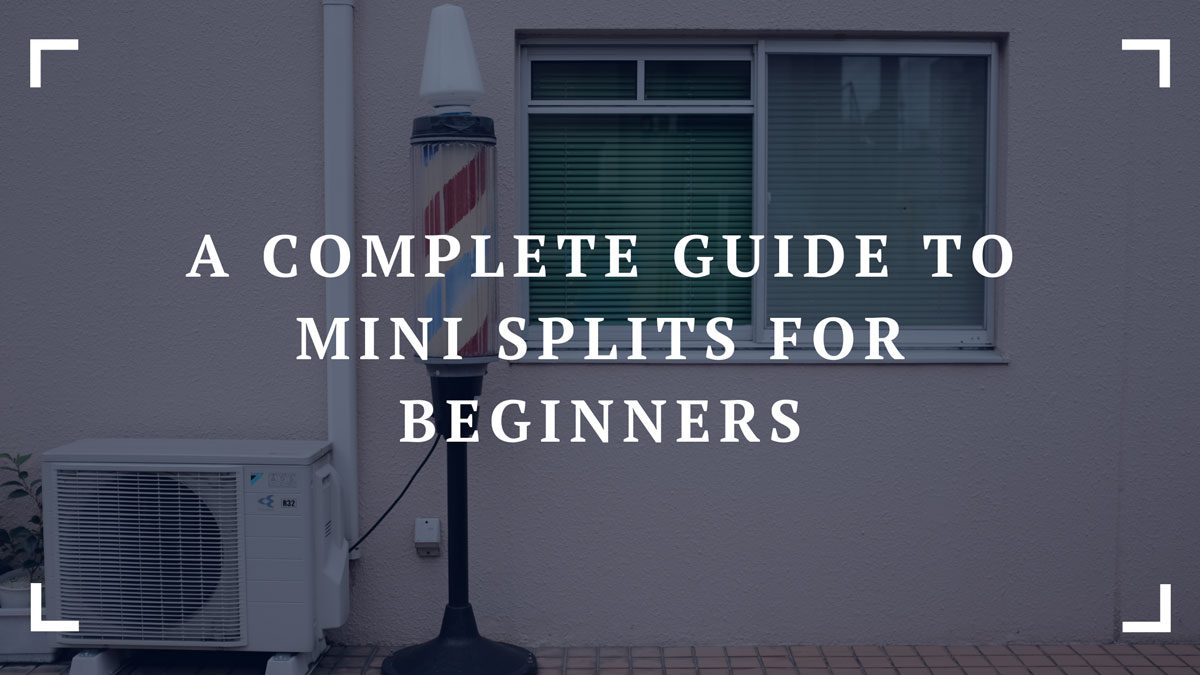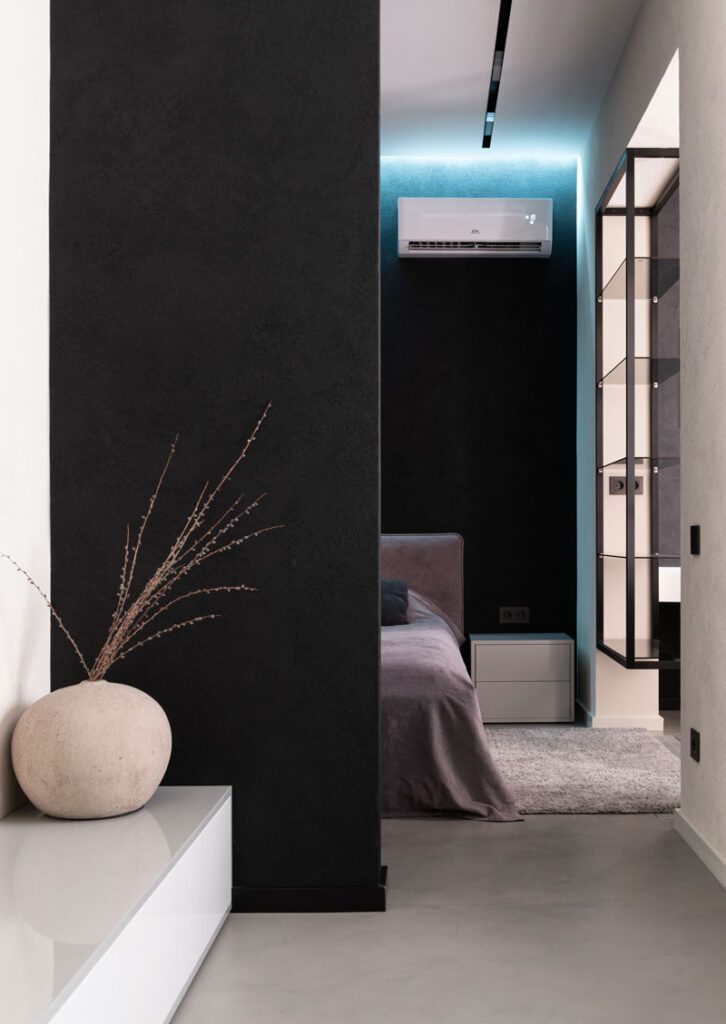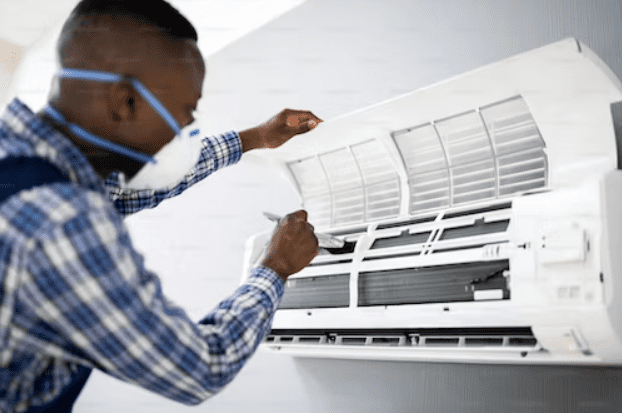Mini-splits are heating and cooling systems, sometimes called ductless mini-splits or ductless heat pumps. These mini-splits have exploded in popularity for residential and commercial applications.
Unlike bulky centralized HVAC units, mini-splits offer a flexible, energy-efficient way to customize your indoor comfort zone by zone. With their discreet profile and advanced technology, it’s no wonder mini-splits are becoming a top choice for energy upgrades, with the best mini-split units offering efficiency, versatility, and affordability.
.
Below is a comprehensive overview of mini-split units. You’ll learn how mini-splits work, the different types, their benefits, installation, and maintenance.

Parts of a Mini Split
A mini-split system has two major components: an outdoor compressor or condenser and a slim indoor air handling unit. A conduit runs refrigerant between the two units. This eliminates the need for ductwork, which traditional HVAC systems require. The outdoor unit holds the compressor, condenser coil, and fan. It works to pump refrigerant through the conduit to the indoor unit. This is where heat exchange occurs via the evaporator coil, and a blower fan blows air into the room.
Mini-splits are sometimes called ductless mini-splits due to their ductless configuration. They may also be called ductless heat pumps since they provide heating and cooling. Compare this to conventional central HVAC units requiring bulky, snaking ductwork to push conditioned air throughout a building.
The mini-split refrigerant conduit allows for an ultra-slim profile indoor unit that can be mounted high on a wall or ceiling. This discreet appearance appeals to homeowners who want to avoid large vents and registers interfering with their interior design vision.
How Does a Mini Split Unit Work?
The main components of a mini-split system are the outdoor and indoor units, connected by a refrigerant conduit that allows the units to exchange heat. Here is a step-by-step explanation of how mini-splits work:
- The compressor in the outdoor unit compresses refrigerant gas, increasing its temperature.
- The hot gas passes through the condenser coil, where a fan blows away heat, condensing the gas to a warm liquid state.
- The refrigerant liquid flows through the conduit into the indoor unit’s evaporator coil.
- A blower fan blows room-temperature air across the evaporator coil. The liquid refrigerant draws heat from the air and evaporates into a cool gas.
- The now cold refrigerant circulates back to the outdoor unit to begin the cooling cycle again. For heating, the cycle operates in reverse.
- The indoor unit’s blower fan blows the cold/warm air into the room for customized cooling or heating in different zones.
This heat exchange process happens independently in each indoor unit connected to an outdoor unit. Keeping refrigerant contained makes mini-splits energy efficient and eliminates duct heat loss/gain issues.

Types of Mini Split Systems
There are two main types of mini-split configurations:
1. Single-Zone System
This is one indoor unit connected to one matching outdoor unit. The most straightforward setup for heating or cooling in just one space.
2. Multi-Zone System
Here, multiple indoor air handler units are connected to one larger outdoor unit. They allow temperature control in multiple rooms with just a single outdoor condenser. A cost-effective way to heat or cool a whole home.
There are further options within these types, like inverter or non-inverter, wall or ceiling mounted, single head or multi-head indoor units, and more. Considerations like room/home size, efficiency needs, and aesthetics will help determine the ideal system type.
The Benefits of Using Mini Splits
There are many compelling reasons mini-split units are surging in popularity. Here are some advantages of having yourself mini-split units.
Energy Efficiency and Cost Savings
Mini-splits can be 24-30% more efficient than conventional HVAC systems. Their SEER and HSPF ratings exceed central air conditioners and heat pumps. Ductless configuration and zoning capabilities eliminate energy waste. This translates into dramatically lower electricity bills.
Zoning for Customized Comfort
Separate indoor units allow different zones to be heated or cooled to be tailored to occupancy and use.
Simplified Installation
Mini-splits don’t require lengthy, complex ductwork routing like central HVACs. Conduit installation is straightforward. Indoor units mount discreetly high on walls or ceilings.
Versatility
Mini-splits work for all heating and cooling applications, including additions, garages, and finished attics. They’re also available in different sizes.
Quieter Operation
No noisy air ducts mean much quieter operation, an appealing benefit for bedrooms, offices, libraries, etc.
Modern, Compact Appearance
The indoor units’ small profile and mounted position provide a contemporary, unobtrusive look.
What to Consider in a Mini Split
To get yourself the proper mini-split system, you must take into account the following:
1. Cooling or heating capacity – Match the BTU/hr capacity to the room size for adequate temperature control. Undersized units won’t cool/heat effectively.
2. Efficiency ratings – Look for higher SEER (Seasonal Energy Efficiency Ratio), EER (Energy Efficiency Ratio), and HSPF (Heating Seasonal Performance Factor) ratings that exceed minimums.
3. Placement – Mount the outdoor unit with proper clearance and airflow, away from windows, overhangs, and fences that may obstruct operation. Place an indoor unit high on a wall or ceiling with no obstructions.
4. Features – Consider smart/wifi controls, air filtration, humidification/dehumidification, remote sensors, multi-zone control, etc.
5. Brand reputation and reliability – Choose established brands known for quality and reliability. Look for good warranties.
6. Budget – Get multiple estimates and take advantage of utility rebates or incentives. The investment pays off long-term.
Cost Factors
- Upfront cost – Mini-split systems have a higher upfront investment than window ACs or central systems. However, utility rebates and incentives can offset some of the initial costs.
- Energy savings – The higher efficiency and lower energy use lead to dramatically lower monthly bills. Mini-splits can pay for themselves in energy savings in as little as 2-3 years.
- Value added – Mini-splits can increase home resale value. As energy costs rise, buyers gravitate toward higher-efficiency homes.
While not the cheapest option, mini-splits provide outstanding investment returns over their long lifespan. Lower bills and added comfort quickly offset the initial cost.
Installation and Maintenance of Your Mini Split Unit

Professional installation is critical -don’t attempt DIY. Hire a licensed technician for proper permitting, load calculation, wiring, charging refrigerant lines, and follow-up.
Regarding maintenance, you should periodically clean air filters and clear debris from outdoor units/fins. Hire a technician for annual check-ups to maximize lifespan.
Proper installation and ongoing maintenance ensure your mini-split system runs efficiently for over 15 years. Take advantage of manufacturer warranties for coverage of any defects.
Common Issues and Troubleshooting
Mini-splits are very reliable, but occasional issues can arise, such as;
- Uneven cooling or heating – This could be a low refrigerant charge. You can call in technicians to check and recharge if needed.
- Freeze-up – Check filters and fins for debris/dirt blocking airflow. Defrost and clean regularly.
- Leaking – Refrigerant leaks require immediate repair by a technician to identify and seal the leak and recharge the refrigerant.
- Noisy unit – Excess noise usually means a problem with the compressor, fan, or refrigerant flow. Have it inspected immediately.
For any error codes or complex issues, contact a technician. However, as a homeowner, you can try basic troubleshooting, like checking for blockages, leaks, and error codes, before calling for service.
Conclusion
There you have it! A guide on ductless mini-splits systems. Mini-split heating and cooling systems have transformed HVAC with their ductless design, efficiency, zoning abilities, and discreet profile. You must understand mini-splits well to make an informed decision about upgrading your own heating and cooling. Choosing mini-splits for your home or business can significantly lower energy bills while providing customized comfort year-round. Select the appropriately sized system when purchasing and get quotes from reputable HVAC contractors.


